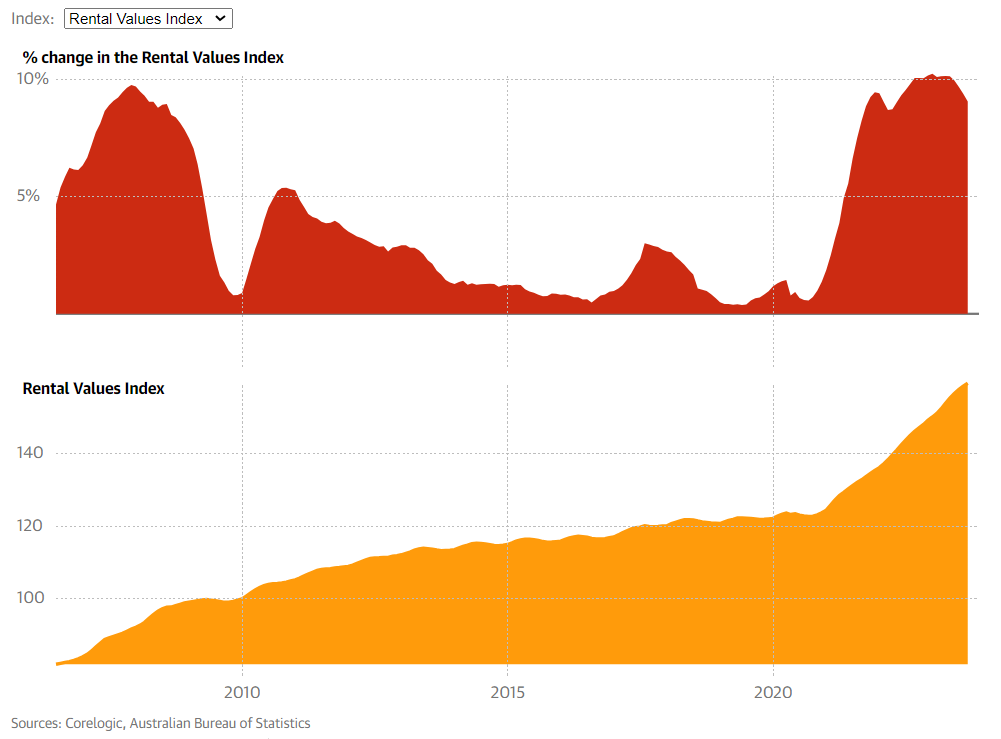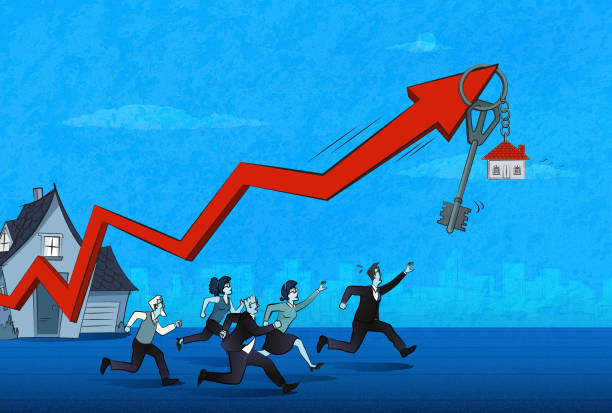In recent years, the Australian property market has undergone seismic shifts, particularly with the rising rents in Australia becoming a pressing concern. Annual rent spikes have not just been noticeable; they have been alarming, outpacing increments not seen since the aftermath of the 2007 Global Financial Crisis (GFC). Delving deeper into this phenomenon reveals intricate patterns, challenges, and the dire need for innovative solutions.

The Rapid Rise
Recent data from Corelogic’s Rental Value Index paints a vivid picture. Rents in Australia have surged at an unparalleled pace, the quickest in over 15 years. By late 2022 and early 2023, annual rent escalations crossed the 10% mark, echoing the GFC era when the growth rate peaked at 9.7%. However, what’s striking now is that housing expenses, as a percentage of household income, have escalated even more than during the previous peak.
A Burden on Households
The stark rise is not just a statistical anomaly; it’s a tangible burden on families. March 2021’s Consumer Price Index (CPI) rent index was a harbinger, indicating a jaw-dropping 55% jump since June 2005. Dr. Michael Fotheringham of the Australian Housing and Urban Research Institute underscores that such spikes intensify the already heavy financial load many Australians bear.
Consistent Upward Trajectory
A look at the data over the past 15 years reveals an unsettling trend: rents have consistently risen. Even during the pandemic-induced disruptions, while there was a brief respite, the broader trajectory has remained upward. The CPI’s recent findings further underscore this, pointing to a 6% year-on-year rise in rental costs.
A Diverse Landscape
While the overarching narrative points towards rising rents in Australia, it’s crucial to recognize the market’s diversity. Different regions, like Sydney and Melbourne, grapple with escalating rents, whereas places like Darwin and Canberra are witnessing contrasting trends. However, beneath these averages lie stories of hardship, especially among those with more limited means.
The Plight of Low-Income Earners
Maiy Azize, representing the Everybody’s Home campaign, emphasizes that the escalating rents aren’t merely about the pace but the relentless annual increments. Anglicare’s data is telling: out of nearly 45,895 listings, only a handful were within reach for someone reliant on jobseeker payments.
Factors Driving the Surge
The factors fueling this rising rents in Australia are multifaceted. From supply chain disruptions affecting construction timelines to the dearth of affordable housing and the rise of short-term rental platforms, several elements are at play. Add to this the economic shifts favoring certain sectors, changing household dynamics, and migration patterns, and the complexity becomes evident.
Rethinking the Rental Market
Eliza Owen from CoreLogic stresses the urgency of recalibrating our approach to the rental market. While the market dynamics of the 2010s were influenced by different variables, the present circumstances necessitate a more holistic, future-focused strategy.
To sum up, Australia stands at a crossroads in its rental market narrative. While some regions grapple with soaring rents, others face contrasting challenges. The overarching trend, however, is clear: the need for comprehensive, sustainable solutions is more pressing than ever. As we navigate these turbulent waters, reimagining Australia’s housing future isn’t just an option; it’s imperative.
Facing challenges with rising rents in Australia? Don’t navigate the complexities alone. Reach out and talk to our expert team today. We’re here to help you find solutions tailored to your needs.

